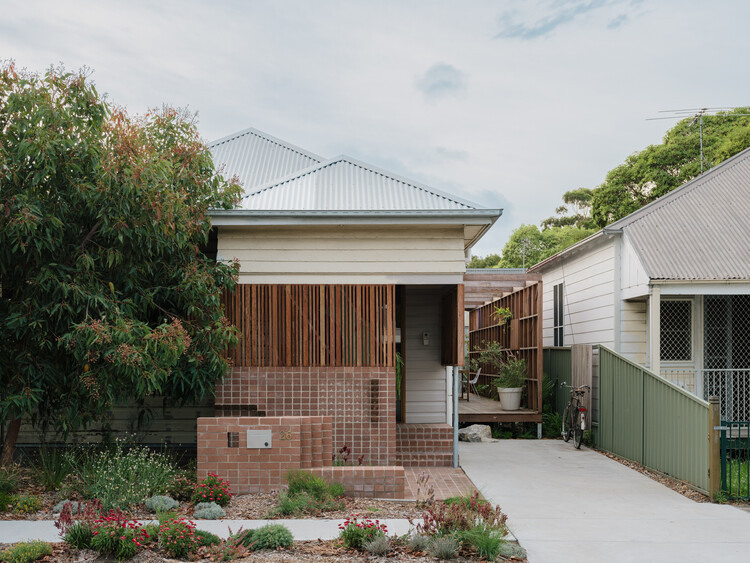
-
Architects: Curious Practice
- Year: 2023
-
Photographs:Clinton Weaver

Text description provided by the architects. Weatherboard cottages built in the first half of the twentieth century were often generous at the front and restricted at the rear, with their relationship to prevailing breezes, appropriate orientation, and gardens being a low priority. Aru House (Awabakal word for “insect”) plugs in a series of carefully balanced sensory amplifiers and connectors to just such a cottage in order for a long-ignored sense of place to re-emerge.



These sympathetic augmentations to the existing dwelling provide numerous advantages, in particular, allowing the building to become responsive to seasonal living patterns with a newfound sense of contextual sensitivity. A new program of adjustable apertures, with only a minor increase to the floor area, has meant greater space efficiency and an increased program for the home. A side addition accommodates a study, bed, and bathroom while the western rear extension forms a deep, reconfigurable living threshold—allowing interior spaces to both connect to and shelter from outside elements through spotted gum sliding screens.




A new side deck performs a natural continuation of interior living areas, allowing inhabitation to expand in summer and compress in winter. All the new programs of the house overlap and borrow from each other in this way, becoming more flexible and generous, which enables efficient planning and an ability to focus on quality over quantity. As a result, the cost and value of the project are measured in joy and delight through the way materials are crafted, light is choreographed, and edges are blurred.



As a gesture of generosity to the street, existing elements of the building were upgraded, and articulated brickwork forms a step, porch, letterbox, and public seat. Front fencing and lawns are replaced with native gardens, bringing color and biodiversity to the public realm. These, and many other bespoke elements throughout the project, are the testing of ideas to form new architectural scenarios, which are the result of working closely with trades to develop construction strategies and efficiencies. In this process of craft and making, architecture is celebrated in its purest form of realizing design intent.


These approaches become an important strategy when considering existing housing stock, and consciously revitalizing homes in this manner ensures the building is loved, cherished, cared for, and respected as it ages gracefully in place and with life.


























